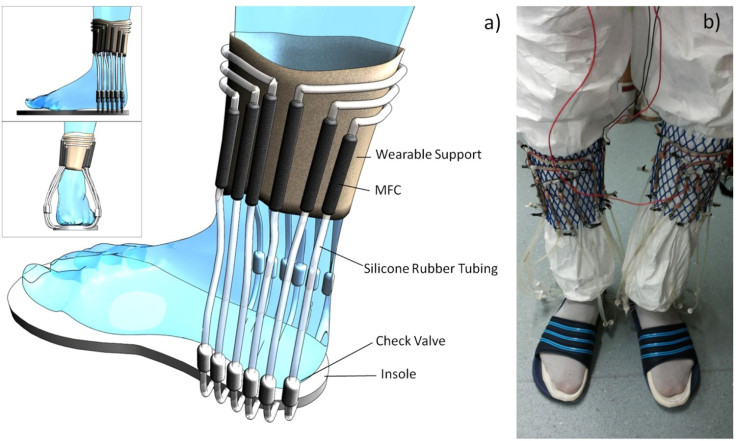New Phone Charger Uses Socks, Microbial Fuel Cells, And Your Urine To Generate Electricity

People spend about three hours per day using their mobile phones. That’s not including time spent talking on them, but rather time spent texting, emailing, or using apps. With so many reasons to use them during the day, it’s only a matter of time before the phone’s battery power starts to run out. When an outlet's out of reach, researchers from the University of Western England have found an alternative way to charge a phone, and it involves human urine.
Using a tube sock-like device, the researchers designed a urine-powered, self-sufficient generator that fits around the foot. It’s made of rubber tubes, a pump, and microbial fuel cells (MFC), which “take the waste that we naturally use and converts it directly into electricity,” said Dr. Ioannis Ieropoulos, of the Bristol Robotics Laboratory, who reported on the device in Bioinspiration and Biomimetics.
“Inside the microbial fuel cell we’ve got live organisms, live bugs, some bugs we would find in sediment, in soil; even in our gut for digestion. Those little organisms inside the microbial fuel cells, they eat the fuel that we give them and by eating it, breaking it down, they produce electrodes, which are the electricity we see at the outflow of the microbial fuel cell.”
To show their concept works, the researchers attached 12 soft, flexible MFCs to carbon-fiber sleeves on each of the user’s ankles. The pump, modeled after the heart of a fish, was embedded in the heel of their sock. This means the user only had to walk around to pump the urine through the tubes to the MFCs, where they passed through creating electricity. To show this electricity could power a self-sustainable system, it was then sent to a microchip board, which transmitted the message, “World's First Wearable MFC,” every two minutes to a PC-controlled receiver station.
Aside from charging our favorite devices, the researchers hope that in the future they’ll be able to apply their technology to military equipment, survival kits, and outdoor equipment. "This work opens up possibilities of using waste for powering portable and wearable electronics," Ieropoulos told Gizmag. "For example, recent research shows it should be possible to develop a system based on wearable MFC technology to transmit a person's coordinates in an emergency situation. At the same time this would indicate proof of life since the device will only work if the operator's urine fuels the MFCs."
While the idea of using urine to power electronics seems gross, it could be the energy of the future, as it’s been shown to power cars and generators. For now, however, let’s keep waste where it belongs — in the toilet.
Source: Ieropoulos I, et al. Self sufficient wireless transmitter powered by foot-pumped urine operating wearable MFC. Bioinspiration & Biomimetics. 2015.



























